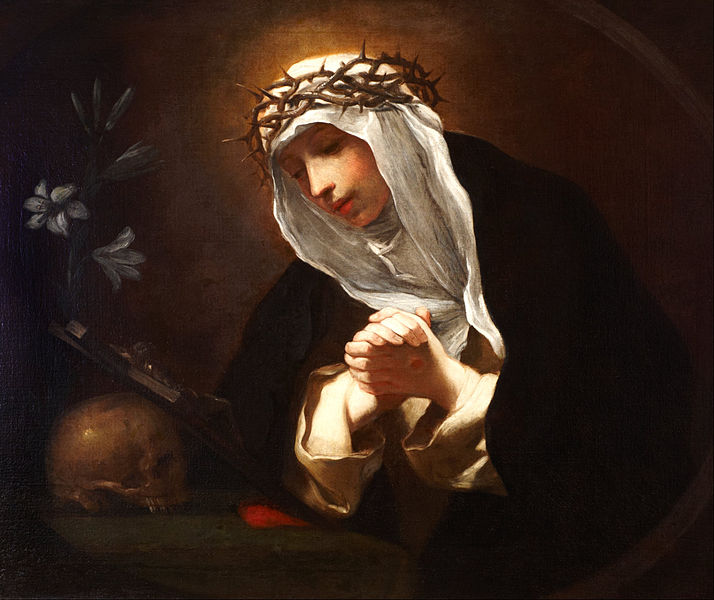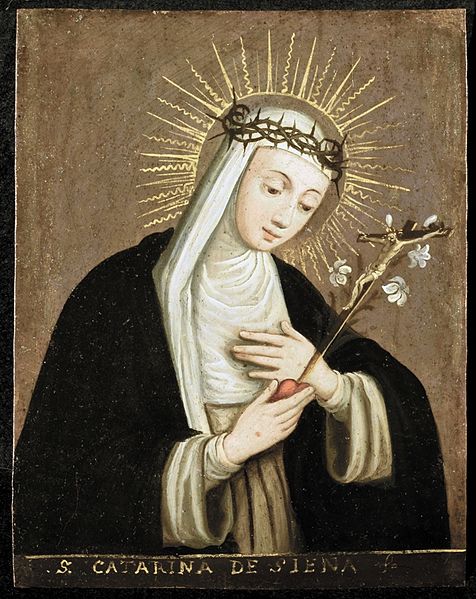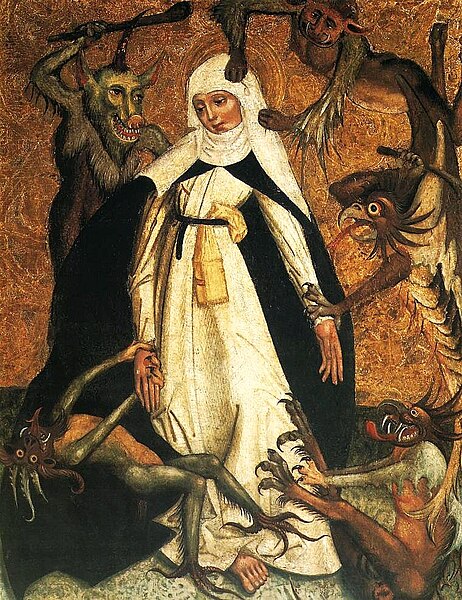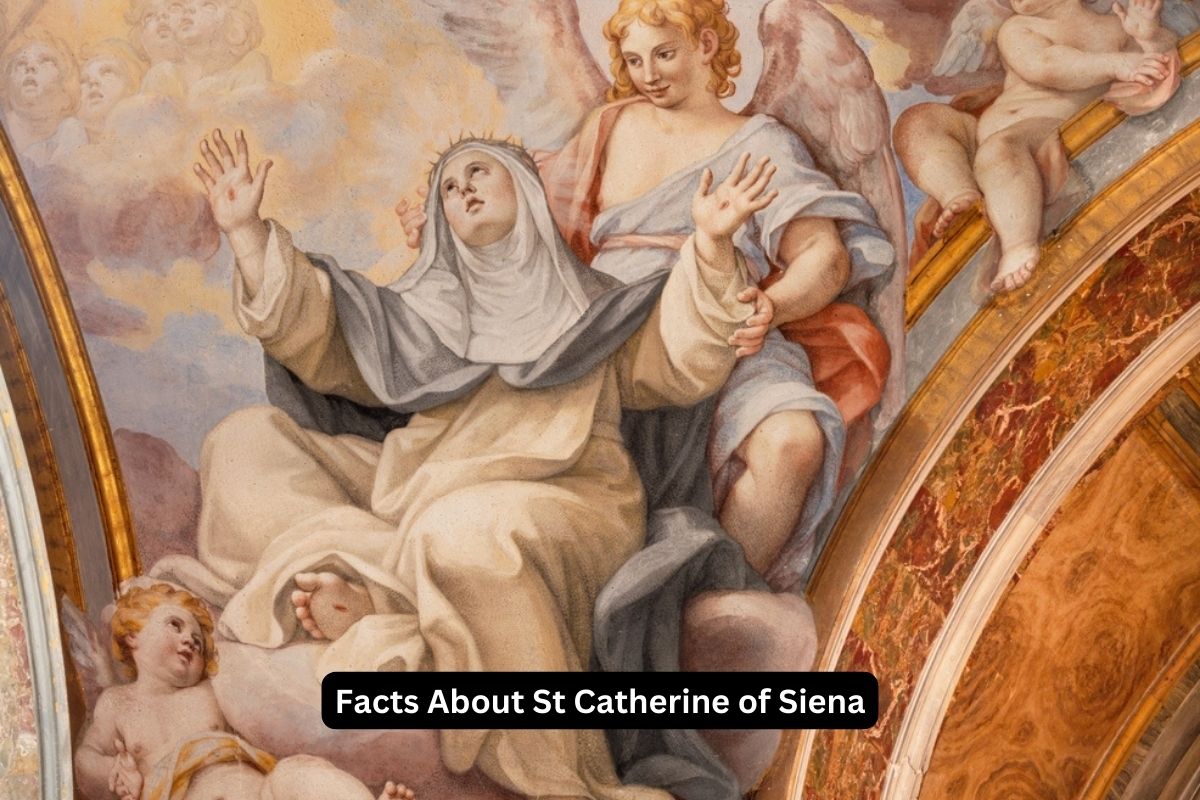St. Catherine of Siena, born in 1347 in Siena, Italy, was a remarkable figure in the Catholic Church during the 14th century.
Her life was marked by profound spirituality, dedication to the poor and sick, and influential interactions with the papacy.
She authored significant theological works, and her impact on the Church and society led to her canonization as a saint and recognition as a Doctor of the Church. In this brief overview, we explore the life and legacy of St. Catherine of Siena in more detail.
St Catherine of Siena Facts
1. Born in Siena, Italy, in 1347
St. Catherine of Siena was born on March 25, 1347, in Siena, a medieval city-state in central Italy. She was born into a large family, being the youngest of 25 children.
Also Read: Facts About St Augustine
Her family was known for their piety and devotion to the Catholic faith, and this early exposure to a devout household likely played a significant role in her spiritual development.

2. Had mystical experiences and visions from a young age
From a very young age, Catherine claimed to have mystical experiences and divine visions. At the age of six, she reported having her first vision of Jesus Christ, which deeply influenced her spiritual life.
Throughout her childhood and adolescence, these mystical experiences continued and intensified. Catherine believed that these visions were a direct communication with God, and they guided her in her religious journey.
3. Became a member of the Dominican Third Order at 16
At the age of 16, Catherine sought to dedicate her life to God and joined the Dominican Third Order.
This was a lay branch of the Dominican Order, which allowed individuals to live a religious life and engage in acts of charity and service while remaining within their own homes and communities.
Catherine’s decision to join the Third Order marked the beginning of her public commitment to a life of prayer, service to the poor, and devotion to Christ.
4. Dedicated herself to helping the poor and sick
St. Catherine of Siena was known for her unwavering dedication to serving the poor and sick in her community. During her lifetime, Siena faced various outbreaks of diseases, including the Black Death, which claimed numerous lives.
Despite the risks, Catherine fearlessly nursed and cared for those afflicted by these diseases, demonstrating her deep compassion and commitment to alleviating suffering. Her selfless acts of charity earned her a reputation for being a compassionate and caring individual.

5. Advised Pope Gregory XI and Pope Urban VI
Catherine’s influence extended beyond her local community. She became a trusted advisor and correspondent to several popes, including Pope Gregory XI and Pope Urban VI.
One of her most significant achievements was her role in convincing Pope Gregory XI to return the papacy from Avignon, France, to Rome in 1377.
Catherine believed that the papacy’s return to Rome would help unify the Catholic Church and restore its authority. Her letters and counsel played a pivotal role in this historic decision.
6. Wrote “The Dialogue of Divine Providence”
St. Catherine of Siena is renowned for her spiritual writings, with “The Dialogue of Divine Providence” being one of her most famous works. This book is a compilation of her mystical experiences and conversations with God.
In “The Dialogue,” Catherine explores profound theological and philosophical concepts while providing guidance on living a devout and virtuous life. Her writings continue to be studied and admired for their spiritual depth and insights into the nature of God.

7. Patron saint of Italy, nurses, and the sick
St. Catherine of Siena is recognized as the patron saint of several important aspects of the Catholic Church and society. She is one of the patron saints of Italy, along with St. Francis of Assisi, signifying her profound influence on Italian spirituality and culture.
Additionally, she is the patron saint of nurses and the sick, highlighting her dedication to caring for the infirm during her lifetime.
8. Experienced the stigmata
Towards the end of her life, St. Catherine of Siena reportedly experienced the stigmata, a phenomenon in which a person exhibits the wounds of Christ, such as those on His hands, feet, and side.
However, in Catherine’s case, these stigmata were invisible to others, only being visible to her. This mystical occurrence is often seen as a sign of her deep spiritual connection with Christ and her participation in His suffering.
9. St. Catherine of Siena was Canonized in 1461
St. Catherine of Siena was formally recognized as a saint by the Catholic Church in 1461, several decades after her death. Her canonization affirmed her holiness, her contributions to the Church, and the enduring impact of her spiritual writings.
This recognition solidified her place among the saints and made her a revered figure in the Catholic tradition.
10. Declared a Doctor of the Church in 1970
In 1970, Pope Paul VI declared St. Catherine of Siena a Doctor of the Church, a rare and esteemed title given to individuals whose theological writings and teachings have made significant contributions to the understanding of Christian doctrine.
Catherine’s work, particularly “The Dialogue,” was recognized for its theological depth and wisdom. She is one of only four women to hold this title within the Catholic Church, alongside St. Teresa of Ávila, St. Thérèse of Lisieux, and St. Hildegard of Bingen.
